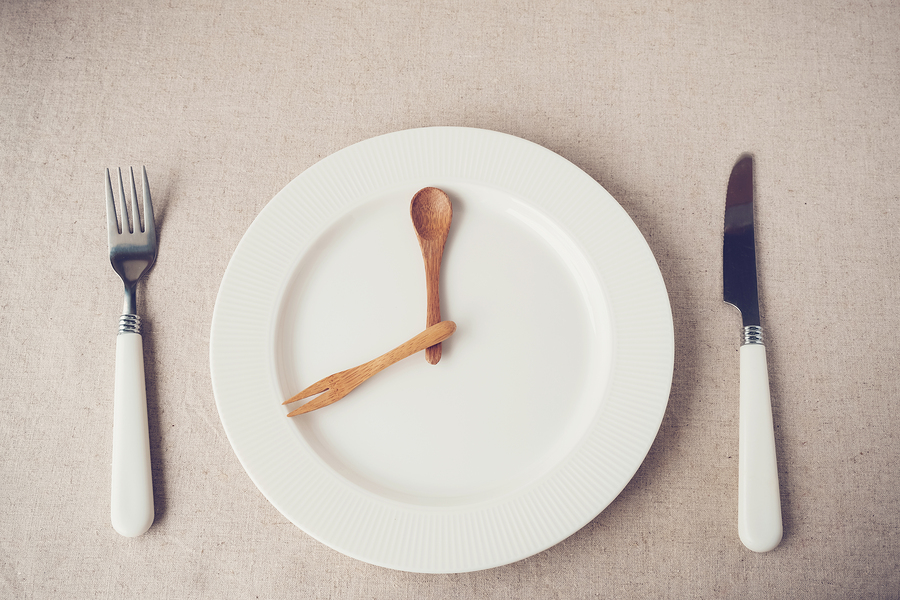You’re probably aware that going too many hours between meals can cause a drop in blood sugar that leads to headaches, fatigue, and difficulty concentrating. While that’s true, new research shows that planned periods of Intermittent Fasting (IF) or Intermittent Energy Restriction (IER) can be good for your health. This is not about starving yourself to lose weight. Instead, IER aims to give the digestive system a break from food, which allows the body to cleanse itself. To be truly restorative, IER is matched with a similar break from mental and physical activity.
Though clinical research is still in the early stages for both animal and human studies, several health benefits have been identified. Researchers are investigating different types of IER protocols for both healthy adults and those who are living with obesity, heart disease, diabetes, and metabolic diseases.
Benefits of Intermittent Fasting
- Increased sensitivity to insulin and leptin, which can lower risk of diabetes, heart disease and even cancer
- Better regulation of hormones associated with appetite
- Enhanced metabolic use of stored fat
- Lower triglyceride levels, which decreases risk for heart disease
- Reduced inflammation
- Enhanced awareness of appetite and cues for eating
Intermittent Fasting Regimens
During an Intermittent Fast, drink plenty of water, keep exercise to low intensity, and avoid stress such as the kind created by work deadlines or caretaking for family. For best health practices, choose unprocessed, whole foods including grains, fresh fruits and veggies, and best quality fish, meat and dairy.
- The 16/8 Method involves skipping breakfast and restricting your daily eating period to 8 hours (e.g., Noon – 8 PM), then fasting for 16 hours (8 PM to 12 PM the next day).
- The Weekly/Bi-weekly 24-hour Fast involves a 24 hour period of fasting for one or two days per week or every other week: Last meal at 6 PM Monday, no food but plenty of water until 6 PM the next day.
- The 5:2 Method involves choosing any two non-consecutive days of the week and eating only about 600 calories on those days: Tuesday 600 calories; Thursday 600 calories, rest of the week eating regular, healthy meals.
Your holistic health practitioner can help you determine if this is a good approach for you and which is the best intermittent fasting regimen to meet your health goals.
References
- Collier, Roger. “Intermittent Fasting: The Science of Going without.” CMAJ : Canadian Medical Association Journal 185.9 (2013): E363–E364. PMC. Accessed 15 Jan. 2018: https://www.ncbi.nlm.nih.gov/pmc/articles/PMC3680567/
- News.Harvard.edu. “In Pursuit of Healthy Aging” The Harvard Gazette. Accessed 12 Jan 2018: https://news.harvard.edu/gazette/story/2017/11/intermittent-fasting-may-be-center-of-increasing-lifespan/
- Rahhal, N. “The fasting diet CAN keep you young: Harvard study explains how plans like the 5:2 protect your cells from aging.” The Daily Mail posted 06 Nov 2017. Accessed 12 Dec 2107: https://www-dailymail-co-uk.cdn.ampproject.org/c/www.dailymail.co.uk/health/article-5055701/amp/Fasting-extend-life-aging.html
- IBIMA Health. Endocrinology. “The Effects of Intermittent Energy Restriction on Indices of Cardiometabolic Health.” Accessed 15 Jan 2018: http://ibimapublishing.com/articles/ENDO/2014/459119/
- Longo, Valter D., and Mark P. Mattson. “Fasting: Molecular Mechanisms and Clinical Applications.” Cell metabolism 19.2 (2014): 181–192. PMC. Accessed 15 Jan. 2018: https://www.ncbi.nlm.nih.gov/pmc/articles/PMC3946160/pdf/nihms551820.pdf
- Healthline.com (Authority Nutrition) “Six Ways to Do Intermittent Fasting.” Accessed 15 Jan 2018: https://www.healthline.com/nutrition/6-ways-to-do-intermittent-fasting
- Intermittent Fasting 101: https://www.healthline.com/nutrition/intermittent-fasting-guide

